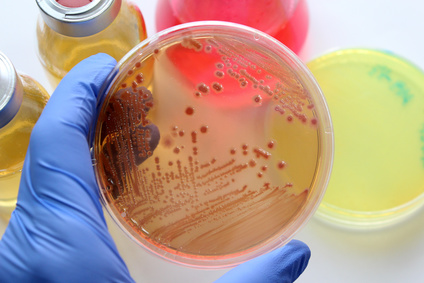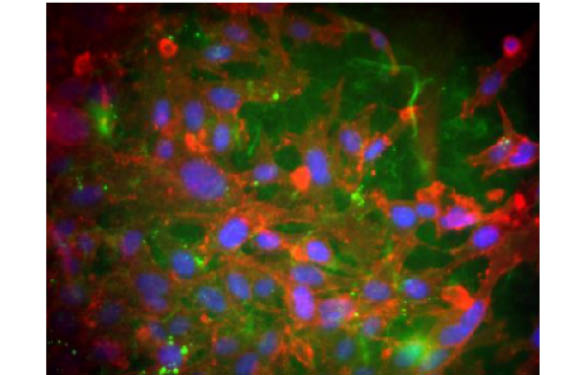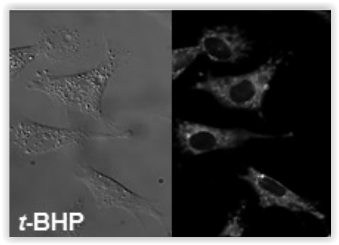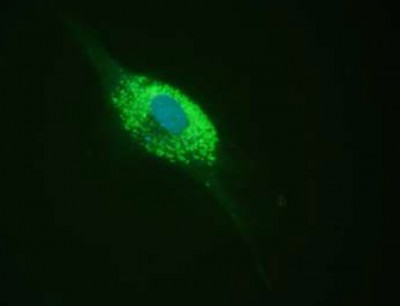Efficient immune response against an infectious agent is organised according to a “two-legged” pattern. In order to give the immune system enough time to fine-tune its weapons against the invader (whilst maintaining the threat at bay), the first line of defence mobilises ancestral effectors during the first hours of the invasion. These “innate” defences aim at stimulating a dormant, but far more specialised and potent, second line of defence: the adaptive immune system.
That’s quite an elaborate chain of reactions… so what role do glycolipids play in immune response?
Activation of the innate defenses eventually spurs the adaptive immunity through the inflammatory response which arises from the “cytokine storm” triggered by innate components. Key to the immune response are the dendritic cells (DCs). DCs patrol every border of an organism. Once an intruder is detected, it is swallowed by DCs that further processes its molecular components and presents them to the effectors of the immune defenses (lymphocytes), now informed on the molecular structure they’ll have to detect and destroy.
Glycolipids as enhancers of immune responses
![CD1d protein detection in human thymus stained with mouse monoclonal [NOR3.2] antibody (cat. nr 210GTX11076).](http://5.196.212.231/wp-content/uploads/2099/12/Photomicrograph-of-human-thymus-stained-with-GTX11076-and-visualized.CD1d-antibody-NOR3.2-NOR3.2-13.17-GTX11076-IHC-1.jpg)
Innate mechanisms always rely on simple, rudimentary molecular structures stolen from the invader and further used to activate and expand clones of responsive lymphocytes. This is especially the case of a minute proportion of T lymphocytes, confusingly termed Natural Killer T (NKT) cells (not to be confused with CD56 positive NK cells!). A subset of NKT cells, termed iNKT cells (for invariant Natural Killer T lymphocytes) have a crippled plasticity of their TCR (T Cell Receptor) and can only produce a narrow spectrum of TCR specificity (hence the term invariant). They do not respond to the canonical MHC antigen presentation system but are sensitive and responsive to dendritic cells with their CD1d molecule loaded with glycolipids from the invader. Reminiscent of most MHC restricted T cells, iNKTcells are thus CD1d restricted and undergo activation and clonal expansion upon engagement of their TCR by alpha-GalactosylCeramide (alpha-GalCer) “stolen” from the intruder and presented by the CD1d molecule of a DC. During activation and clonal expansion of iNKT cells, classical pro-inflamatory cytokines are released for the chain reaction of further immune events.
Chemically synthetised alpha-GalCer for in vitro research

- With chemically synthetised alpha-GalCer (cat. nr KRN7000; >95% purity), Life Scientists now have access to a robust source of alpha-GalactosylCeramide for their in vitro applications. As an example, recent work on glycolipids have shown an increased population of iNKT cells either in vitro (from lymphoid organ cell suspensions) or directly in vivo, by expanding these clones through their natural activation signals.
The demonstrated antimicrobial effect and role in autoimmune diseases of iNKT cells, makes them a good target for immunotherapy studies.
- In another study, 7DW8-5, a KRN7000 derivative, was described to be a potential vaccine adjuvant in clinical tumour treatment with oral vaccines (cancer immunotherapy).
Related research reagents
-
Thymus Dissociation Systems (CHI Scientific)
The Thymus Dissociation kits contains the reagents necessary for dissociation of 2 separate tissues (of up to 10~50 g each) from mouse or rat Thymus. These kits are based on the unique properties of the ready-to-use tissue OptiTDS™ buffers.
-
Cell separation Systems (CEDARLANE)
Lympholyte® cell separation centrifugation media has been specifically designed for the isolation of viable lymphocytes from lymphoid organs by removal of red and dead cells. To select the Lympholyte the most suited to your samples, follow this link!
-
Human Dendritic cells (HemaCare)
Cryopreserved HemaCare’s Dendritic cells (cat. nr 252PB010C-1; 2 x 106 cells; >90% Purity by FC) are obtained from immunomagnetic separation techniques from a leukapheresis product.
-
Immuno-editing immuno-assays (RayBiotech)

Typical results obtained with RayBio® Membrane-Based Antibody Arrays (C-Series).
RayBio® C-Series Human Inflammation Arrays enable researchers to perform semi-quantitative detection of 20 pro-inflammatory cytokines and/or chemokines in one experiments from serum, plasma, cell culture media, and other liquid sample types.
The C-Series Arrays utilize the sandwich immunoassay principle, wherein a panel of capture antibodies is printed on a nitrocellulose membrane solid support. The array membranes are processed similarly to a Western blot (chemiluminescent readout). Signals are then visualized on x-ray film or a digital image; the entire procedure being completed in 1 day.
Looking for more research tools focused on immune responses and infectious diseases?
Leave a message below or subscribe to tebu-bio’s thematic eNewsletters!
Sources:
- Chang D.H. et al. “Sustained expansion of NKT cells and antigen-specific T cells after injection of alpha-galactosyl-ceramide loaded mature dendritic cells in cancer patients” (2005) Vol. 201, No. 9, 1503–1517. DOI: 10.1084/jem.20042592.
- Loffredo S. et al. “Simplexide Induces CD1d-Dependent Cytokine and Chemokine Production from Human Monocytes” (2014) PLoS ONE 9(11): e111326. doi:10.1371/journal.pone.0111326.



